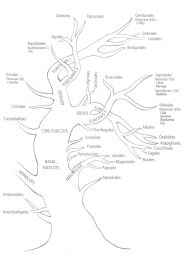Pierre-Jean Robiquet (1780–1840)
Christian Warolin (1921– 2018), pharmacist and historian of pharmacy, portrays our protagonist in a biography as follows:
"Si l'est une figure pharmaceutique remarquable, établie à la jonction de la pharmacie et de la chimie, Robiquet en est l'archétype au XIXe siècle.
Pharmacien d'officine, pharmacien militaire, analyste et chimiste eminent, découvreur de principes actifs végétaux, professeur à l'École de pharmacie de Paris, industriel, il a parcouru toutes les étapes que la profession pharmaceutique pouvait offrir à cette époque."
Translation: If he is a remarkable pharmaceutical figure, living at the junction of pharmacy and chemistry, Robiquet is the archetype of the 19th century.
Pharmacist, military pharmacist, eminent analyst and chemist, discoverer of active plant ingredients, professor at the Paris School of Pharmacy, industrialist, he went through all the stages that the pharmaceutical profession could offer at that time.
A second excellent review regarding Robiquet's life and contributions to science has been written more recently by Jaine Wisniak.
Interested readers may consult these biographies. Additionally, I would like to emphasize the following:
In March 1821, the researcher duo Joseph Pelletier (1788–1842) and Joseph Bienaimé Caventou (1795–1877) wrote in an article [1a] on quinquina Carthagène (Portlandia hexandra [today Coutarea hexandra]):
"Nous avions commencé l'examen du café, nos résultats étaient semblables à ceux de notre confrère [Robiquet]; mais son travail antérieur au nôtre et plus avancé, nous a dispensé de terminer notre analyse." (We had begun the examination of coffee, our results were similar to those of our colleague [Robiquet], but his work, which was earlier and more advanced than ours, dispensed us from completing our analysis.)
Although we do not know the date of his presentation in the bosom of the academy "lue en 1821 à la Société de pharmacie"[1b], we may assume that Robiquet began his research on caffeine at about the same time as Ferdinand Giese, i.e. as early as late autumn 1820, which marks the beginning of an astonishing synchronism in caffeine research.
Robiquet’s reading to the Society of Pharmacy of the year 1821 was not published, because the author hoped to resume and complete his work by making known the active principle of the coffee seeds [1c]; he presented in 1823 only a short extract of his memoir in the Dictionnaire de Technologie [2] describing the main properties of a component characteristically crystalline and velvety, which he had named caféine:
If green coffee is treated with distilled water in the cold, a yellowish brown liquid is obtained which filters with difficulty (…); and if one evaporates after filtration, small fan-shaped crystals get formed which are a little colored and have a slightly bitter taste. (…) All these dissolutions [also EtOH] reproduce after cooling or evaporation the same substance without any changes except those of the crystals, which get whiter, longer and like silky; they perfectly resemble a beautiful asbestos [3].
[1a] Pelletier J et Caventou JB, Journal de Pharmacie, 7/3 (1821) 101
[1b] Pelletier J, Journal de Pharmacie, 12/5 (1826) 229
[1c] Robiquet P-J (1833?) Analyse succincte des divers mémoires. Imprimerie de Bachelier, Paris, p. 30
[2] Robiquet P-J (1823) Dictionnaire technologique ou nouveau dictionnaire universel des arts et métiers, volume 4, chapter CAFÉ, pages 50–61. Thomine et Fortic, Paris
[3] Lorsqu’on traite le café vert par de l’eau distillé et à froid, on obtient une liquide d’un brun jaunâtre qui filtre difficilement (...); et lorsqu’on l’évapore après filtration, elle donne, par suite de sa concentration, de petits cristaux palmés peu colorés, (...) et d’une saveur légèrement amère. (...) Toutes ces dissolutions reproduisent par refroidissement ou par évaporation, la même substance, sans quelle subisse d’autre changement que ceux de cristallisation, ils deviennent alors plus blancs, beaucoup plus allongés et comme soyeux ; ils ressemblent parfaitement à de bel amiante.
The 'Caffeines'
The
Caffeine Plants


